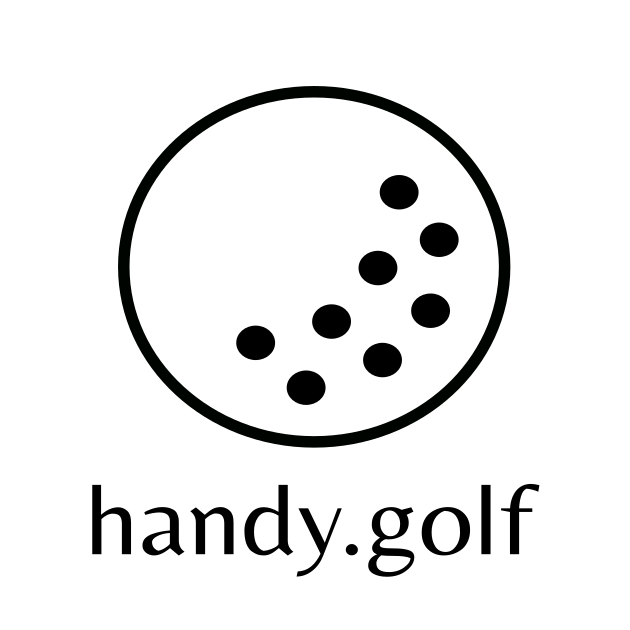
Talking in the 19th Hole
DRIVER. Professionalizing golf course superintendents requires knowledge of the rules. They certainly won’t have to serve as referee, but a good command of the subject will allow them to do their jobs better.
Rules have a lot to do with superintendents’ work, but some rules affect them more directly and more frequently. Today we will talk about rules related to the maintenance of the course.
THE TEE MARKERS. Rule 6.2b4 says that “the location of the tee-markers is set by the Committee to define each teeing area and should remain in that same location for all players who will play from that teeing area.
If the player improves the conditions affecting the stroke by moving any such tee-marker before playing from the teeing area, he or she gets the general penalty for breach of Rule 8.1a(1). In all other situations, the tee-markers are treated as regular movable obstructions that may be removed as allowed in Rule 15.2”.
And Interpretation 6.2b4/1 says “Because moving tee-markers can have a significant effect on the competition, they should not be moved and, if they are moved, they should be replaced. However, if a player moves a tee-marker because he or she thinks it should be in a different position, or deliberately destroys the tee-marker, the Committee may choose to disqualify the player for serious misconduct contrary to the spirit of the game (Rule 1.2a)”.
The battle between the marshal and the mower operator of the teeing areas is known. While the marshal makes sure that the tee markers are well placed, the mower operator moves them to carry out his work, and by natural enmity with the marshal, he puts them as he pleases. This situation can cause a player to violate the cited rules. The superintendent and the head pro can work out the differences between the marshal and the mower operator before it becomes more significant.
THE BRANCHES OF TREES NEAR THE TEEING AREA. The rules define the teeing area as “is a rectangle that is two club-lengths deep”. (Definitions). They also say that “the player may stand outside the teeing area in making the stroke at a ball in the teeing area”. (Rule 6.2b(1)). A common problem in tournaments is that to increase the course’s difficulty, the tee markers are placed back, but without respecting the two baselines. This causes branches, bushes, and advertising to decrease the area that the players have by right. They are also positioned sideways to close the tee shot angle. In both cases, the superintendent’s responsibility is that branches and bushes do not interfere with the player’s swing, giving left- and right-handed players plenty of room even if they decide to stand outside the teeing area.
TREE BASINS. Some superintendents make tree basins around young trees to retain water and moisture. I believe that it is best if there are no tree basins on the course, but if they are necessary, the Committee must make one of the following decisions:
– Build them without artificial materials, mark them as ground under repair, and give relief without penalty.
– Construct them without artificial materials, declare it an integral object, and play from there or proceed according to Rule 19 of an unplayable ball.
– Construct them with artificial materials that meet the definition of immovable obstruction and that the player takes relief without penalty.
– Construct them with artificial materials, declare it an integral object, and play from there or proceed according to Rule 19 of an unplayable ball.
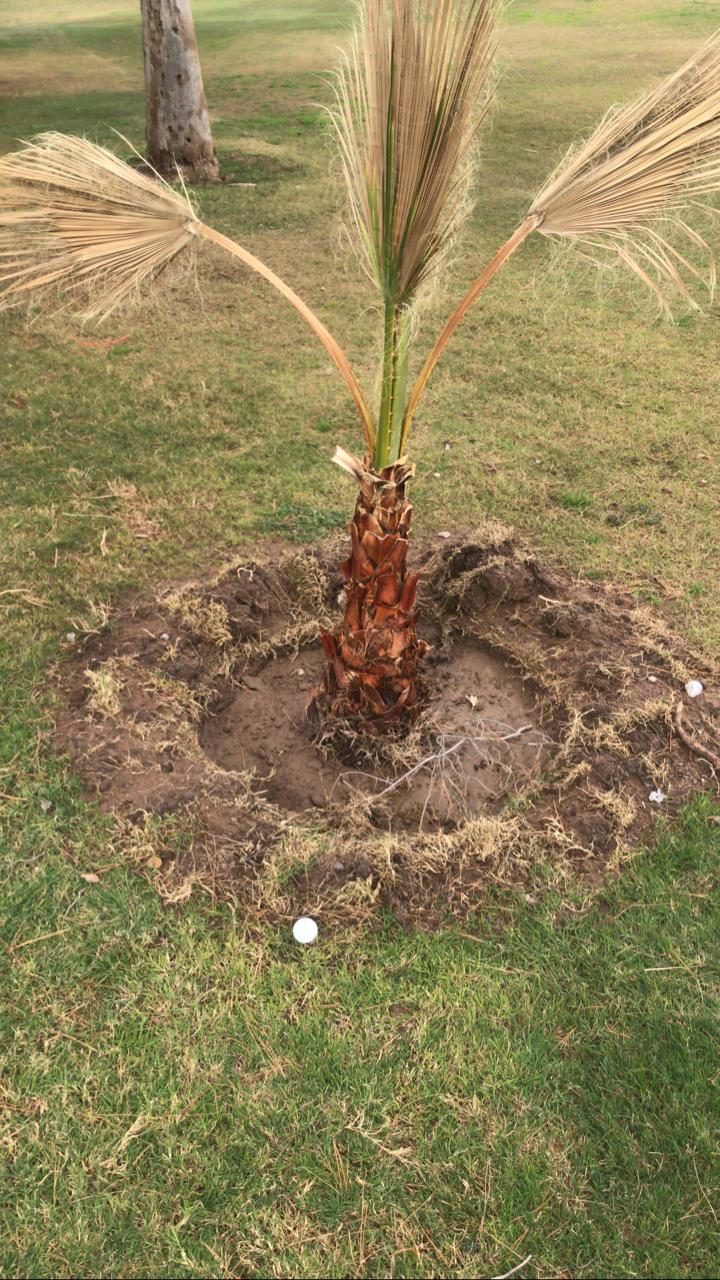
THE YOUNG TREES. The superintendent in his tree program plants young trees that we customarily call “baby trees”. The Committee to prevent damage to young trees, when a player makes a stroke, may choose to designate them as a no play zones. For this, it is recommended to publish the Model Local Rule E-10:
“The young trees identified by [identify markings] are no play zones: If a player’s ball lies anywhere on the course other than in a penalty area and it lies on or touches such a tree or such a tree interferes with the player’s stance or area of intended swing, the player must take relief under Rule 16.1f.
If the ball lies in a penalty area, and interference to the player’s stance or area of intended swing exists from such a tree, the player must take relief either with penalty under Rule 17.1e or with free relief under Rule 17.1e(2)”.
Young trees should be identified by stakes, ribbons, or some other clear way. When the tree has matured and no longer needs protection, the Committee should withdraw the local rule and/or remove the identifying stake or ribbon from the tree.
THE PRACTICE BALLS. Rule 5.5a says “while playing a hole, a player must not make a practice stroke at any ball on or off the course. These are not practice strokes:
– A practice swing made with no intent to strike a ball.
– Hitting a ball back to a practice area or to another player, when done solely as a courtesy.
– Strokes made by a player in playing out a hole whose result has been decided”.
Thus we see that if a player, during the play of a hole, hits a practice ball to return it to driving range, it is not a violation if he does so for the sole purpose of bringing order to the course.
With technological advances in balls and clubs, driving ranges are falling short. This causes many balls to end up in the course, confuse players when looking for their ball and slow down the pace of play. The superintendent can lessen these problems by improving the infrastructure of the practice tee.
OUTSIDE INFLUENCE. Outside influence is “any of these people or things that can affect what happens to a player’s ball or equipment or to the course:
– Any person (including another player), except the player or his or her caddie or the player’s partner or opponent or any of their caddies,
– Any animal, and
– Any natural or artificial object or anything else (including another ball in motion), except for natural forces”. (Definitions).
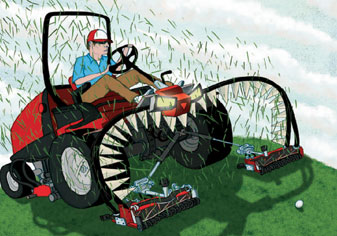
The course maintenance staff are considered an outside influence according to the rules. In the rules, there are multiple situations related to course staff. The suggestion is that the superintendent trains his staff on rules. Some essential points to deal with are:
– Return the found clubs.
– Be prudent about their position and transfers on the course to avoid accidents.
– Respect the players’ ball.
TEMPORARY WATER. Temporary water is “any temporary accumulation of water on the surface of the ground (such as puddles from rain or irrigation or an overflow from a body of water) that:
– Is not in a penalty area, and
– Can be seen before or after the player takes a stance (without pressing down excessively with his or her feet).
It is not enough for the ground to be merely wet, muddy or soft or for the water to be momentarily visible as the player steps on the ground; an accumulation of water must remain present either before or after the stance is taken”. (Definitions).
Temporary water can be caused by rain, leaks in the irrigation system, sprinkler failure, leaving a hose open, leaving a sprinkler running for too long, etc. When the ball is in temporary water, players often doubt how to proceed and call the referee or pro, delaying the game.
The superintendent can help avoid or reduce these situations by placing the necessary drains so that the water drains in the best possible way, keeping the irrigation system in good condition, and repairing leaks as soon as possible.
EMBEDDED. Embedded happens “when a player’s ball is in its own pitch-mark made as a result of the player’s previous stroke and where part of the ball is below the level of the ground. A ball does not necessarily have to touch soil to be embedded (for example, grass and loose impediments may be between the ball and the soil). (Definitions).
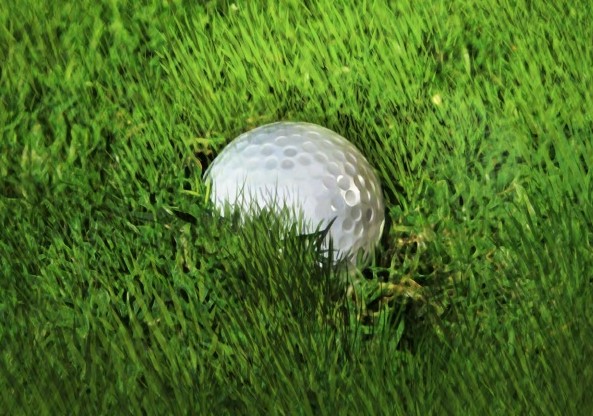
The ball tends to embed itself because the soil is very soft due to humidity. “When a player’s ball is embedded in the general area and relief is allowed under Rule 16.3a, the player may take free relief by dropping the original ball or another ball in this relief area”. (Rule 16.3b).
One of the saddest situations for a player is that the ball gets embedded and is lost. In this case, the ball is considered lost, even though everyone has seen the approximate place where it was embedded. The superintendent’s job is to keep the ground from getting excess moisture.
TRACTOR TRACKS, UTILITY CARS, ETC. With rains or irrigation leaks, the course becomes so soft that tractors, machinery, utility carts, and carts mark the ground with their tires.
The Interpretation Ground under repair/1 says that “a hole made by maintenance staff is ground under repair even when not marked as ground under repair. However, not all damage caused by maintenance staff is ground under repair by default.
Examples of damage that is not ground under repair by default include:
– A rut made by a tractor (but the Committee is justified in declaring a deep rut to be ground under repair)”.
The superintendent should ask his staff to circulate along the cart paths when the course is very wet. If it is necessary to enter the course, do so carefully. In case of leaving deep traces, notify you as soon as possible.
ANIMAL HOLE. Animal hole is “any hole dug in the ground by an animal, except for holes dug by animals that are also defined as loose impediments (such as worms or insects). The term animal hole includes:
– The loose material the animal dug out of the hole,
– Any worn-down track or trail leading into the hole, and
– Any area on the ground pushed up or altered as a result of the animal digging the hole underground”. (Definitions).
Animal holes are an abnormal course condition. The player can take relief without penalty. It is necessary to find the ball in the hole or that it is known or virtually certain that it is, which means that it is at least 95% likely that the ball is in the hole.
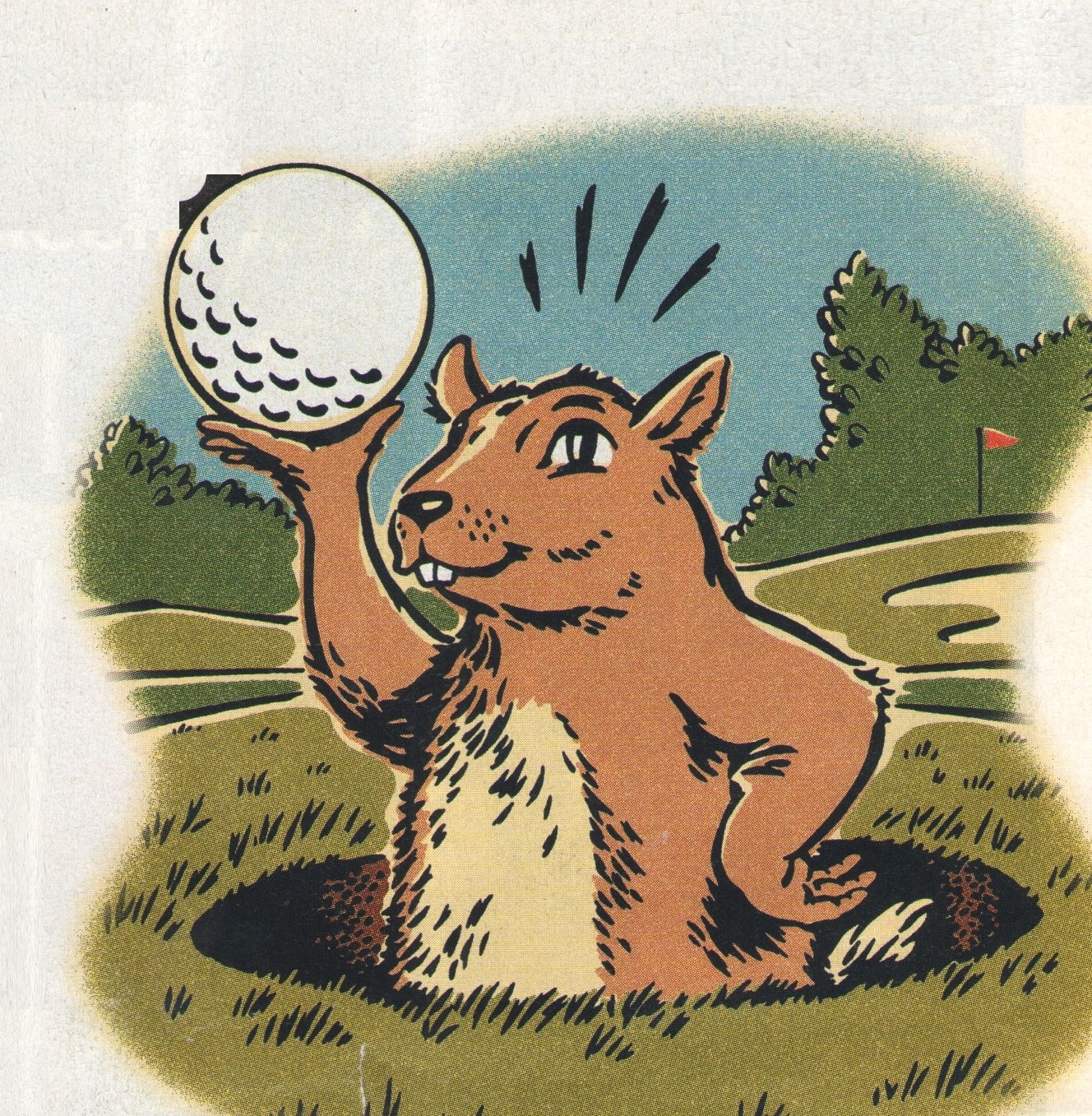
The fauna that lives on a golf course is varied, including moles, rabbits, hares, squirrels, armadillos, opossums, snakes, iguanas, cats, etc. Some of them poke holes in the ground. The superintendent is responsible for controlling the population of these animals and repairing the holes they make. We golfers like nature, but we don’t like it when our ball goes into the wrong hole.
THE LOWER BRANCHES OF THE TREES. Interpretation 8.1b / 4 gives us “examples of actions that are not considered fairly taking a stance and will result in a penalty under Rule 8.1a if they improve conditions affecting the stroke include:
– Deliberately moving, bending or breaking branches with a hand, a leg or the body to get them out of the way of the backswing or stroke.
– Standing on tall grass or weeds in a way that pushes them down and to the side so that they are out of the way of the area of intended stance or swing, when a stance could have been taken without doing so.
– Hooking one branch on another or braiding two weeds to keep them away from the stance or swing.
– Using a hand to bend a branch that obscures the view of the ball after taking the stance.
– Bending an interfering branch in taking a stance when a stance could have been taken without doing so”.
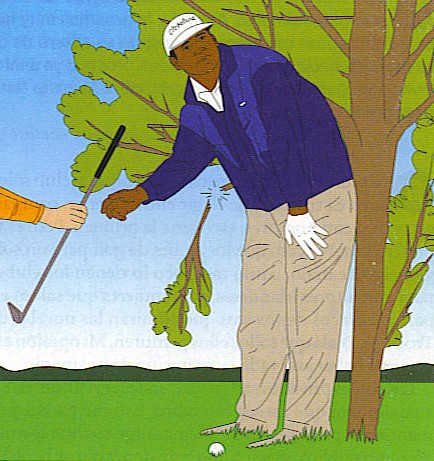
The superintendent will avoid some of these situations by pruning the lower branches of the trees. The USGA recommends that tree branches be pruned in cases where they may present an unreasonable position in the one-shot play.
PENALTY AREA. Penalty area is “an area from which relief with a one-stroke penalty is allowed if the player’s ball comes to rest there. A penalty area is:
– Any body of water on the course (whether or not marked by the Committee), including a sea, lake, pond, river, ditch, surface drainage ditch or other open watercourse (even if not containing water), and
– Any other part of the course the Committee defines as a penalty area”. (Definitions).
Rule 17.1b allows “play the ball as it lies without penalty, under the same Rules that apply to a ball in the general area”. So a golfer’s first option in a penalty area is to play the ball as it lies. Most of the time, the player cannot because the ball is in the water, but he could if the superintendent gave a minimum of maintenance to the penalty area in others. Players will thank the superintendent for finding and hitting a ball from a penalty area.
OUT OF BOUNDS. Out of bounds are “all areas outside the boundary edge of the course as defined by the Committee. The boundary edge should be defined by boundary objects or lines”. Boundary object are “artificial objects defining or showing out of bounds, such as walls, fences, stakes and railings, from which free relief is not allowed.
This includes any base and post of a boundary fence, but does not include:
– Angled supports or guy wires that are attached to a wall or fence, or
– Any steps, bridge or similar construction used for getting over the wall or fence”. (Definitions).
In the rules, there are several situations about out of bounds. The suggestion is that the superintendent, head pro, and marshal go around the course to define and precisely mark the course boundaries, identify and supervise places where situations such as those provided for in the rules may arise, and frequently check the course marking.
The USGA recommends that a white circle be painted around the base of each stake. In case the stake is removed without the Committee’s authorization, it is known where it was and can be repositioned.
LOST. I worked at a golf course where the rough was so high that a player hit from the rough and advanced the ball less than a yard, and we couldn’t find it. The rough should be high enough to be a significant problem, but it shouldn’t be so high that you can’t find the ball or hit from there.
Lost is “the status of a ball that is not found in three minutes after the player or his or her caddie (or the player’s partner or partner’s caddie) begins to search for it”. (Definitions).
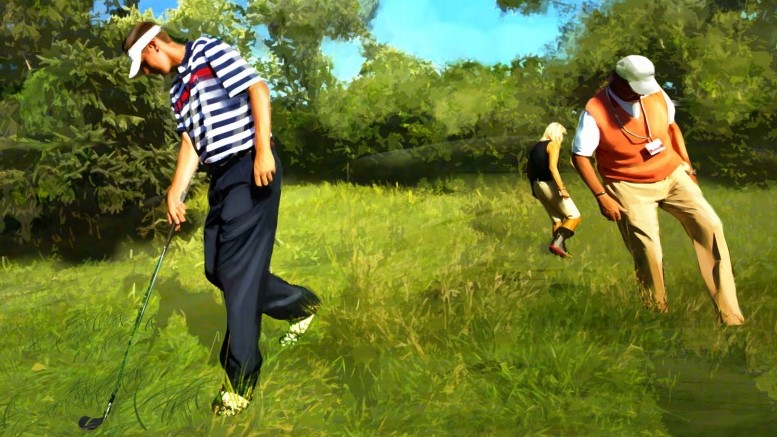
A less punishing rough would be recommended for most courses, as very high rough increases the time spent searching for balls, increases the number of balls lost, and leads to slower play.
UNPLAYABLE BALL. Rule 19.1 says that “a player is the only person who may decide to treat his or her ball as unplayable by taking penalty relief under Rule 19.2 or 19.3”. In most courses, we find places where it is impossible to play the ball. This occurs in ravines, forests, bushes, roots, rocky areas, very tall roughs, trees with low branches, neglected maintenance areas, and areas with loose impediments (leaves, branches, logs, etc.) accumulated as trash. The suggestion is that the superintendents, with the authorization of the Committee, reduce and improve these areas to make the course more friendly and reduce round times.
THE EDGES OF THE PUTTING GREEN. Putting green is defined as “the area on the hole the player is playing that:
– Is specially prepared for putting, or
– The Committee has defined as the putting green (such as when a temporary green is used).
The putting green for a hole contains the hole into which the player tries to play a ball.
The edge of a putting green is defined by where it can be seen that the specially prepared area starts (such as where the grass has been distinctly cut to show the edge), unless the Committee defines the edge in a different way (such as by using a line or dots). (Definitions).
“A ball is on the putting green when any part of the ball:
– Touches the putting green, or
– Lies on or in anything (such as a loose impediment or an obstruction) and is inside the edge of the putting green. (Rule 13.1a).
Rule 13.1b says that “a ball on the putting green may be lifted and cleaned (see Rule 14.1). The spot of the ball must be marked before it is lifted and the ball must be replaced on its original spot (see Rule 14.2)”. Problems arise when the edges of the green are not clear due to difficulties in the cut. The superintendent should train his greens mowers to make sure the edges are well defined.
THE RAISED HOLE. The hole’s mouth tends to be raised, forming «the anthill» due to the hole cutter’s suction when making the hole and the footfalls of the players when taking out their ball. Rule 13-3a considers what to do when the ball passes the overhanging hole:
“If any part of a player’s ball overhangs the lip of the hole:
– The player is allowed a reasonable time to reach the hole and ten more seconds to wait to see whether the ball will fall into the hole.
– If the ball falls into the hole in this waiting time, the player has holed out with the previous stroke.
– If the ball does not fall into the hole in this waiting time:
o The ball is treated as being at rest.
o If the ball then falls into the hole before it is played, the player has holed out with the previous stroke, but gets one penalty stroke added to the score for the hole”.
But the rule does not include what to do when a ball inexplicably bounces out of the hole or deflects to the opposite side of the landing. I suggest to the superintendents and the head pro that the mouth of the hole be flattened during the day.
AERATION HOLES. Aeration is one of the essential practices on a golf course. Two of the most important benefits of aeration are:
– Allows the roots to go deeper and grow denser.
– Improves firmness and playability and fights the «thatch».
The superintendent should inform the players that greens, fairways, roughs, etc., are aerified. The head pro should publish the Model Local Rule E-4:
“If a player’s ball lies in or touches an aeration hole:
– Ball in General Area. The player may take relief under Rule 16.1b. If the ball comes to rest in another aeration hole the player may take relief again under this Local Rule.
– Ball on Putting Green. The player may take relief under Rule 16.1d.
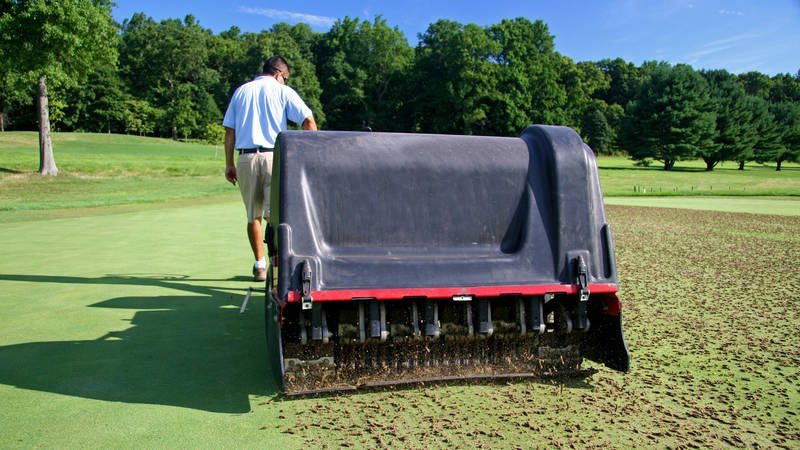
But interference does not exist if the aeration hole only interferes with the player’s stance or, on the putting green, on the player’s line of play”.
THE RAKES. The rakes used in bunkers are movable obstructions “because can be moved with reasonable effort and without damaging the obstruction or the course». (Definitions). Rule 15.2a says that “without penalty, a player may remove a movable obstruction anywhere on or off the course and may do so in any way.
If a player’s ball moves while he or she is removing a movable obstruction:
– There is no penalty, and
– The ball must be replaced on its original spot”.
The ball often comes to rest on a rake placed inside or outside the bunker. There is no perfect answer for the rakes’ location, and it is a matter for each Committee to decide whether the rakes are placed inside or outside the bunkers. It is recommended to leave the rakes outside the bunkers in areas where they are unlikely to affect the ball’s movement. The superintendent should train his staff to help achieve this recommendation.
I met a superintendent who considered his work to be good if the course was green, it probably is, but his work goes beyond the grass’s color. The superintendent who knows the rules, who travels the course frequently and plays golf, will surely attend to more details than those who spend more time in his office. FORE.
